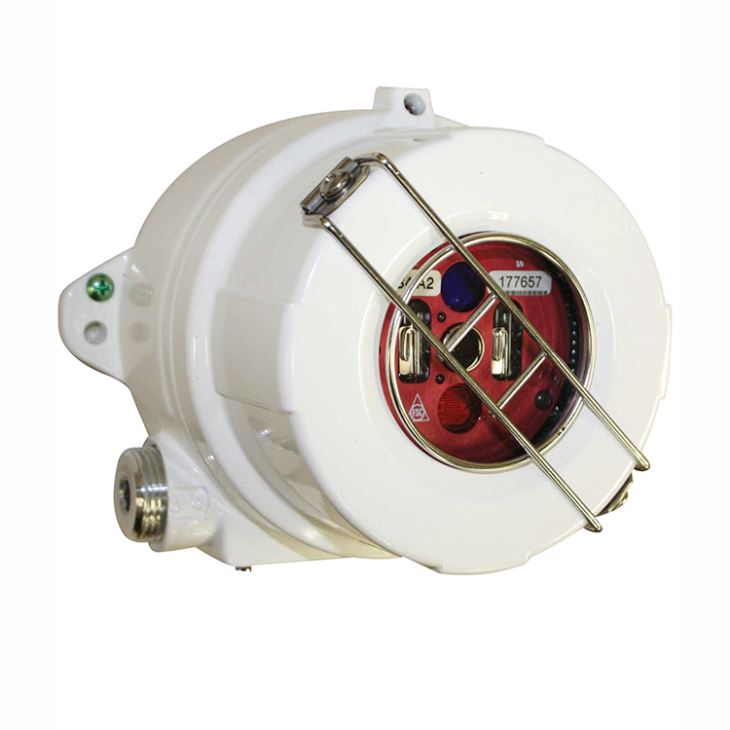According to the light characteristics of flame, there are three kinds of flame detectors: one is the ultraviolet detector which is sensitive to the ultraviolet radiation with shorter wavelength in the flame; the other is the infrared detector which is sensitive to the infrared radiation with longer wavelength in the flame; the third is the ultraviolet / infrared hybrid detector which simultaneously detects the ultraviolet with shorter wavelength in the flame and the infrared with longer wavelength. At present, ultraviolet, double infrared, triple infrared and infrared ultraviolet compound flame are widely used. The following is a comparison of various types of flame detectors of Anyu company.
The principle of UV detector to detect flame is that it can radiate strong energy ultraviolet light at a very fast speed (3-4 milliseconds) at the moment when combustible materials burn or explode. Therefore, compared with the infrared flame detector, the ultraviolet flame detector has the advantages of high sensitivity and fast flame response, which is especially suitable for the industrial facilities requiring fast response to flame information and alarm. It can not only monitor hydrocarbon flame (gasoline, propane, methane, alcohol, etc.), but also identify non hydrocarbon flame (hydrogen hydrogen), silane, hydrazine, magnesium, etc. However, lightning, electric arc, welding light and sunlight through the hole in the ozone layer are easy to cause false alarm of ultraviolet linear flame detector, so it is not suitable for use in places where welding arc and electric arc are often generated, nor in places exposed to lightning light.
Infrared flame detector is based on the principle of detecting the high temperature of flame and a large number of high temperature gases caused by flame can radiate infrared rays of various frequency bands to detect flame. Two infrared and three infrared flame detectors are commonly used.
IR2 dual infrared flame detector uses two infrared sensors with different wavelengths with narrow-band filtering, one of which works at the central wavelength reflecting the flame information, the other monitors other infrared radiation in the environment, and combines the flicker characteristics of the flame to identify the radiation spectrum matching the flame characteristics.
IR3 three infrared flame detector adds an infrared sensor on the basis of dual infrared flame detector, which can receive signals of three different frequency bands, and establishes a logic judgment that can distinguish "flame" and "interference". Compared with dual infrared flame detector, IR3 three infrared flame detector has higher false alarm immunity and larger coverage.
UV / IR2 infrared ultraviolet composite flame detector is designed with three channels of sensors. One channel uses ultraviolet flame sensor in the blind band of sunlight, and the other two channels share narrow-band infrared sensors working in different wavelengths. One sensor works in the specific central band of flame radiation as the main sensor of infrared flame monitoring, and the other sensor is used to eliminate monitoring Measure the influence of non flame information on the main infrared flame sensor in the environment and provide a reliable detection reference for the main sensor. The infrared ultraviolet compound flame detector has excellent flame recognition sensitivity and strong immunity to non flame infrared interference. It solves and overcomes the problem of false alarm when the detection distance increases. It fundamentally solves the problem that the ultraviolet sensor is easily affected by lightning, arc light, X-ray and other factors, and the infrared sensor gives false alarm, Thus, the fast response and accurate recognition of the flame signal are realized.
